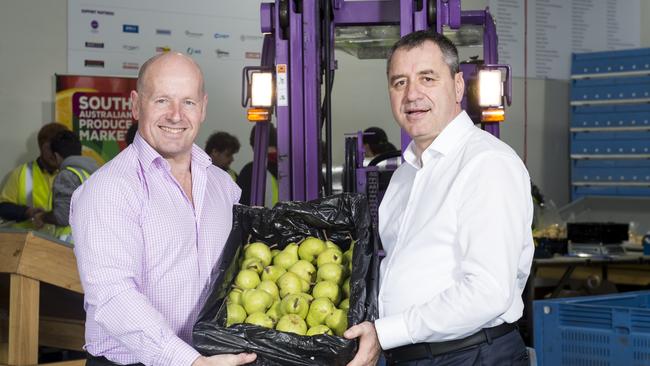More than 102,000 South Australians seeking food donations, forced to skip meals to pay bills
MORE than 102,000 South Australians seek help from food charity Foodbank every month, as parents skip meals for days on end so children can eat and utility bills can be paid, astonishing figures show.
SA News
Don't miss out on the headlines from SA News. Followed categories will be added to My News.
- SA’s overdue electricity bills are the nation’s highest
- 101 ways to save on power bills
- Money wasters costing households more than $5000 a year
MORE than 102,000 South Australians seek help from food charity Foodbank every month, as parents skip meals for days on end so children can eat and utility bills can be paid, astonishing figures show.
About one quarter — or 26,877 — of those seeking food assistance are children.
The alarming figures have been released today in Foodbank’s 2017 Hunger Report, which also shows that demand from South Australians needing food has increased 21 per cent over the past 12 months, up from 84,847 last year and 56,000 the year before.
Foodbank SA chief executive Greg Pattinson said the high number of those needing assistance was staggering, but not surprising, because more and more SA families were being forced to make the heartbreaking decision to either “heat or eat”.
“We’ve heard it from so many people; the power bills come in and they have to decide: ‘Do we feed the kids today or do we not?’” he said.
New figures show more than 35,000 South Australian households cannot afford to pay their electricity bills and owe the nation’s highest average debt of $876.

“There are plenty of stories of people who come in wanting food because they haven’t eaten for three or four days because they just can’t keep up with the bills.”
Mr Pattinson said Foodbank — which distributes food through 550 local charities — had begun to hold temporary “pop-up” food banks every couple of months in an effort to keep up with unprecedented demand.
“We held one at Noarlunga a couple of weeks ago and close to 800 people went through in two hours and we gave away almost nine tonnes of food,” he said.
“One lady told me that she earned $1000 a month and had just received an electricity bill and simply couldn’t afford to eat for this month — and that's only 10km south of the CBD.
“Anecdotally, we regularly see that kids are sent off to school and they are OK, but mum and dad don’t eat ... one woman told me that she had only Vegemite sandwiches for the week.”
It’s a familiar story for “Kerrie” who was one of the 102,718 people turning to Foodbank last year. “I accessed food support for around six months,” she said. “I was in desperate need of help, with mounting bills and a son with a disability; I was struggling and started to fall into depression.
“We just couldn’t afford to put food on the table ... it was hard because I just wanted the best for my son and I couldn’t give it to him at that time.”
But Kerrie said after accessing food through one of Foodbank’s agencies, she was able to get her life back on track.
Foodbank’s Hunger Report also detailed that 3.6 million Australians had experienced food insecurity at least once in the last 12 months, and almost half of those were employed.
It also showed that the top cause of people’s food insecurity was unexpected large bills, followed by factors including rent and that Gen Y and Gen Z made up 38 per cent of those facing food insecurity.
The Hunger Report coincides with Anti Poverty Week starting today, in which the South Australian Council of Social Service is highlighting that society needs to better understand the struggles of those living in poverty.
SACOSS senior policy officer, Greg Ogle, said there was a “poverty premium” put on those with the lowest incomes — for example, more expensive electricity because they can’t afford solar panels, or more expensive overall shopping bills because they couldn’t afford to buy in bulk.
It comes as Reserve Bank figures show that Australian households have put the brakes on consumer debt, with overall personal debt shrinking at its fastest rate in five years, down 1.1 per cent in 12 months.
Fresh figures last week showed the average credit card balance fell to $3069, its lowest level since December 2007.
CommSec senior economist Ryan Felsman said slow wages growth and rising cost of living pressures, such as energy bills, were prompting people to be conservative about their personal debt, even though home loan lending was at record highs.
Mr Pattinson said over the past 12 months, Foodbank had distributed three million kilos of food in SA, but was struggling to keep up with demand that was coming from regional as well as city locations.
— with Anthony Keane
Hunger report by the numbers
102,718 The number of South Australians given meals each month in 2016-17.
26,877 Children given meals each month.
5.05 million Meals distributed during 2016-17.
550 The number of agencies supported through Foodbank.
420 Schools given food during 2016-17.
56,000 The number of hours of volunteer work in 2016-17.
2.5 million kilograms of food distributed through SA.
56 The percentage of people who report large bills as their reason for food insecurity.


